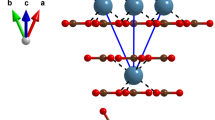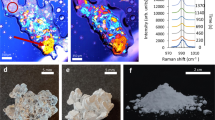Abstract
EXPERIMENTAL investigations of the photoelastic behaviour of sodium nitrate are of particular interest because the single crystal of sodium nitrate is highly birefringent but very soft and brittle. It has a cleavage plane parallel to face r (ref. 1) which can be cleaved very easily. This sets a limit to the maximum stress that can be borne by the crystal. Unfortunately, this maximum stress is too small to produce additional birefringence measurable with the usual optical devices. All soft crystals such as alums and alkali halides require a stress ranging from 0.5 to 0.8 kg/mm2 for photoelastic studies. A part of the load (about 0.2–0.3 kg/mm2) is used to make the crystal prism sink a little into the thin lead washers and its orientation is then maintained steady at all subsequent loads. This is particularly necessary in the case of naturally birefringent crystals like barite and quartz, for the slightest tilt of the prism is sufficient to vitiate the result. The birefringence of sodium nitrate is about twelve times that of quartz or barite and still greater attention has to be paid to the correct orientation of the crystal prisms. Several trials on prisms of sodium nitrate for different directions of stress showed that the maximum stress that could be carried was about 0.35 kg/mm2. The major portion of this stress was necessary for maintaining steady the orientation of the prism. Hence the small additional birefringence that might be produced as a result of the safest additional load was too small to be detected by the usual optical devices. It has been found that if any information could be sought at all on the photoelastic behaviour of this crystal, it was only by the ultrasonic method which I have developed2.
This is a preview of subscription content, access via your institution
Access options
Subscribe to this journal
Receive 51 print issues and online access
$199.00 per year
only $3.90 per issue
Buy this article
- Purchase on SpringerLink
- Instant access to full article PDF
Prices may be subject to local taxes which are calculated during checkout
Similar content being viewed by others
References
Dana, E. S., Text Book of Mineralogy (1949).
Narasimhamurty, T. S., Acta Cryst., 14, 1176 (1961).
Narasimhamurty, T. S., thesis, Osmania Univ. (1955).
Author information
Authors and Affiliations
Rights and permissions
About this article
Cite this article
NARASIMHAMURTY, T. Photoelastic Behaviour of Sodium Nitrate. Nature 211, 401–402 (1966). https://doi.org/10.1038/211401a0
Issue Date:
DOI: https://doi.org/10.1038/211401a0



